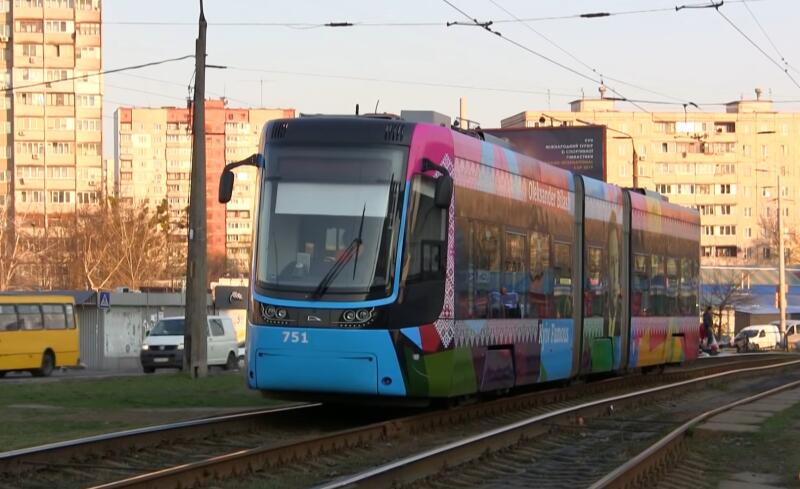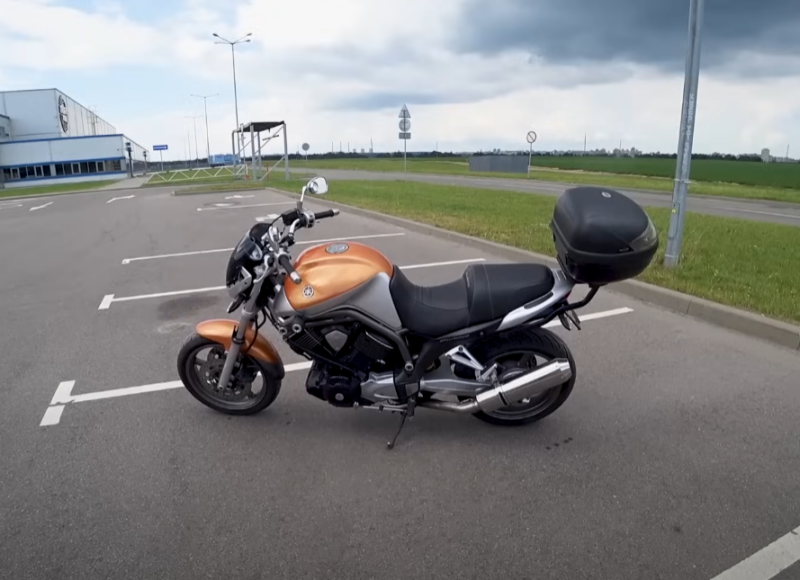The example of Gorlovka, which after the revolution was a small working settlement, is very indicative for me. In just one decade, it received the status of a city and was divided into three districts! And this is a settlement, the number of inhabitants of which has never exceeded four hundred thousand people. It is clear that the "millionaires" of the Land of the Soviets showed even more striking dynamics. For example, about half a million Soviet citizens lived in Kazan at the beginning of the 50s. Three decades later, their number has doubled.
 Petersburg metro, which is almost 68 years old. Photo: youtube.com
Petersburg metro, which is almost 68 years old. Photo: youtube.comThis situation pleased officials, who reported an increase in the well-being of the people, referring to the constant population growth in all major cities of the country. But people not only needed somewhere to live and something to eat. They needed to commute to work, from work, or simply go about their business. And the existing transport interchange simply could not cope with the ever-increasing passenger flow. In Moscow (1935) and Leningrad (1955), a good solution to the problem was the introduction of the subway, which later received several intracity lines at once.
In the 60s, the population of other cities in the country also increased markedly. This was especially true of the capitals of the Union republics. Kyiv became a "millionaire" the very first of them, in the late 50s. It is not surprising that in 1960 the third subway in the country opened here. In the same decade, two more union capitals acquired their own subway: Baku, with a million inhabitants, in 1967, and the Georgian capital a year earlier. It is interesting that Tbilisi was inferior to the main city of the neighboring republic and only in the late 70s was able to "exchange" a million.
 The fastest Kharkov metro in the USSR. Photo: youtube.com
The fastest Kharkov metro in the USSR. Photo: youtube.com In the following decades, projects for laying underground structures began to be implemented in other large cities of the country: Kharkov, Nizhny Novgorod, Minsk, Tashkent and Novosibirsk. In order to ensure their profitability, a passenger flow of at least 40 thousand people per hour was necessary. The tram and trolleybus "brotherhood" could cope with no more than 15-17 thousand. What about those cities that did not reach the level of the metro, but suffocated from the lack of capacities of land-based urban transport. The optimal solution for them was an intermediate form: a light rail.
Kyiv high-speed tram - the first in the USSR
On the threshold of the seventh decade of the last century, Kyiv became the first city in the USSR (after Moscow and St. Petersburg), whose population exceeded one and a half million people. Therefore, the subway, which existed for about ten years, could not cope with the ever-increasing passenger flow, especially since its network did not cover some parts of the city. Therefore, the main burden fell on the shoulders of ground urban transport.
At that time, trolleybus routes No. 6 and 18 were the most overloaded. The problem was exacerbated by active construction work carried out in the urban areas of Borshchagovka and Otradnoye. This meant only one thing: a cardinal solution of the issue not adopted in the near future could lead to a transport collapse on this branch.
 The first transport of the Kyiv high-speed steel "Tatra-T3". Photo: youtube.com
The first transport of the Kyiv high-speed steel "Tatra-T3". Photo: youtube.comThe then head of KTTU Vasily Dyakonov was a man of progressive views. He used the achievements of the young inventor Veklich, using the trolleybus train system (the design consisted of two or three cars that worked in spikes). Unfortunately, this did not completely resolve the issue, but only gave the management a small respite. The system could handle about 17 people per hour. Very soon it became clear that already in the current decade it will be one and a half times more in this area. This is not enough for laying a metro line, but a lot for a new trolleybus train.
The participation of the Soviet delegation in the work of the UITP (International Union of Public Transport) was a great help. It was there that they learned about plans to create a high-speed tram line in many major cities in Europe and the world. There was a recommendation to study the world experience and consider the prospects for its application in the union capital. Fortunately, the issue was resolved in the affirmative.
On the eve of the fifty-sixth anniversary of the creation of the USSR, the first high-speed tram line in our country appeared in Kyiv. It has become an alternative to the metro for the Left Bank.
The tram turned out to be the most notable infrastructure project that radically solved the problem of transport interchange in that area of the Ukrainian capital. The engineers of the State Institution "Kyivproekt" developed a program that was planned to be implemented in several stages:
✅ from the district to Victory Square
✅ continuation to st. Red Army
✅ laying a tunnel in the direction of the square. Lesya Ukrainka
The most daring were the voiced prospects for extending the line to the Patona bridge. In fact, everything turned out to be more modest and the project was limited to its original size, lasting for 9,25 km. The service area included 12 stations, between which two- or three-car Tatra T3SUs ran. Nevertheless, it became the first to be implemented on the territory of the Union, setting an example to follow for other major cities in the country.
Other successful and not so successful projects
Although not everything went smoothly with the light rail in Saratov, their example turned out to be a motivating factor for the administration of another Russian city - Izhevsk. Its population by the mid-70s exceeded half a million and continued to grow further. Adding a new type of urban transport seemed quite justified.
 High-speed tram on the streets of Izhevsk. Photo: youtube.com
High-speed tram on the streets of Izhevsk. Photo: youtube.comThe emergence and development of the automobile enterprise significantly increased the passenger flow in the border areas. In fact, the eastern part of Izhevsk experienced a critical shortage of urban public transport. They tried to solve the problem fundamentally.
During 1982/83 a high-speed line appeared. Its construction took place in two phases. The effect turned out to be more than positive, so it was worth expecting an increase in the length of the line.
The economic crisis in the USSR in the late 80s became the main obstacle to the further implementation of the plan. Even the erection of the buildings of the tram depot No. 3 turned into a long-term construction, which grew into a frozen project in the post-Soviet period.
There were plans to launch a high-speed tram in the city on the Dnieper. But, for strategic reasons, the project moved into the plane of a conventional metro. It turned out to be one of the most modest in the country with six stations and a total length of less than 8 km. Given such small parameters, underground transport could not play a big role in unloading its ground "colleagues" in the city of Dnepropetrovsk.
 This is how the Kryvyi Rih metrotram system looks like. Photo: youtube.com
This is how the Kryvyi Rih metrotram system looks like. Photo: youtube.comIn neighboring Krivoy Rog, the situation turned out to be much more cheerful. The local high-speed tram has successfully joined the urban transport system. And the extension of the route, even in the difficult post-Soviet period, made it possible to play a key role in the local transport infrastructure. It is not uncommon to see a train of three Czech-made tramcars on city streets.
The Kazan project can be considered no less successful. True, here it is slightly different in design, so it is often referred to as an accelerated tram. And, of course, the well-known Volgograd high-speed tram. The latter is such a thoroughly constructed and operating mechanism that it deserves a separate story. This is exactly what we will do in one of the future materials.










